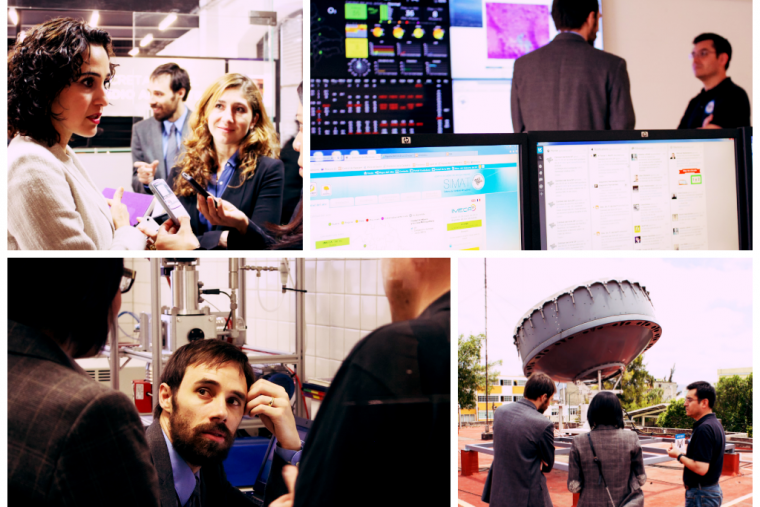Related

Last week, Kevin Cromar, an assistant professor in NYU’s Department of Environmental Medicine, and I were in Mexico City working with the Department of Environment (SEDEMA) to improve air quality. Our trip included the signing of a Memorandum of Understanding between the Marron Institute and SEDEMA, an agreement to analyze air quality filters, strengthen technical capacity, and exchange ideas about how to improve urban air quality. Tanya Muller, Environmental Comissioner, was very excited about the collaboration.
Kevin and his team are using a fluorescent x-ray machine (XRF) at NYU to analyze 300 hundred air quality filters from Mexico City. They will measure trace element concentrations within each air quality filter and analyze the historical trends of the elements. The filters date from 2006 up until 2011. The work includes re-calibrating the XRF machine, analyzing each filter, obtaining and analyzing the aggregate data, brainstorming about policies to improve air quality and sharing knowledge and technical capacity with Mexico City. The collaboration will span the rest of 2014 and can possibly extend further, looking into the impacts of air quality on health in 2015. SEDEMA will be acquiring a similar machine by the end of 2014, so the collaboration will be useful in getting the city familiar with the technology and building capacity within SEDEMA.

Kevin and I visited SEDEMA’s real-time monitoring station and laboratory and Kevin was blown away with their “top notch” monitoring capacity. Mexico City already analyzes micro particulates in real time. Marron will add value by analyzing historical patterns, highlighting changes that have had important impacts on air quality. Armando Retama, the lead technician in air quality in Mexico City, who has worked for SEDEMA for more than a decade, suspects that reducing sulfur from vehicle fuels can help to improve the city’s air quality — a question that the Marron analysis can shed light on.
Mexico City recently won the C40 Climate Leadership Awards in the Air Quality category for their PROAIRE program. Because of POAIRE, Mexico City has consistently reduced its carbon emissions for the past few years. Their programs include emission verification, a shared bike system "Ecobici", among others. As Kevin explained, SEDEMA has very strong equipment and capacity but there is still a lot of opportunity to translate this knowledge into better public policy to improve air quality.
In an increasingly urban world, urban air quality is a critical issue and one that NYU is particularly well-suited to address. Kevin’s work helped New York City obtain the best air quality in the last 50 years by changing the composition of heating fuels within buildings. Sulfur dioxide emissions fell by 69% and Mayor Bloomberg called it “the single biggest step to save lives since we began our comprehensive smoking control program”.
We are extremely proud to be working on improving air quality in Mexico City and will keep updating on the progress.
Check out the local press coverage of this work on the most relevant newspapers in Mexico: Reforma,Excelsior, Milenio, and an MVS Radio interview.
Tile image by juanchb via Flickr.
Please fill out the information below to receive our e-newsletter(s).
*Indicates required.